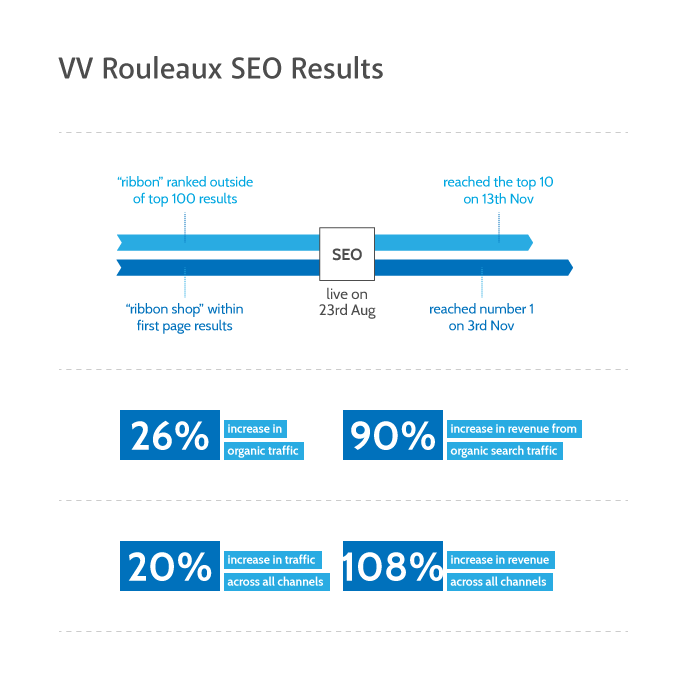Search Engine Optimisation (SEO) is the practice of optimising your website for search engines and users who find your site via a search engine. There are many introductory articles out there, but for today, we will be focusing on practical points that any webmaster can implement in a few minutes to boost their search rankings and increase the chances of a user clicking on them.
MANDATORY
Before we get started on optimisation, there are some basic elements your site must have before it can even be recognised by a search engine. Having any of the below missing increases the odds that web crawlers – bots dispatched by search engines to index all the websites out there – aren’t even aware your site exists.
XML Sitemap
At the address /sitemap.xml must be a correctly formatted XML file listing all the webpages on your site. This gives web crawlers a map for them to follow. How your webpages are organised in your sitemap helps inform search engines as to how your site is structured, allowing faster and fuller indexing of your site.
There are many free XML sitemap creators out there and most Content Management Systems (CMS) such as WordPress or Drupal create them automatically. Go to www.[your domain].com/sitemap.xml to check the status and layout of your sitemap.
Robots.txt
Robots.txt file is a file placed on your web server at /robots.txt that tells web crawlers the location of your sitemap, and which webpages they can and cannot view. You will want to disallow back-end pages you don’t want people to see or aren’t useful for browsing the site like the /admin panel.
Again, there are many free Robots txt creators out there and most CMSs create them automatically. Go to www.[your domain].com/robots.txt to check that it exists and doesn’t block any important pages.
Search Consoles
Both Google and Bing offer a free service where you can register your site with them to ensure that it is indexed. If you have not done so already, click the links and register accounts on their Search Consoles, then submit your site to guarantee that it will show up correctly on search engines.
GETTING STARTED
The number one rule is to put yourself in the place of the user and imagine what they would look for in a site. For example, you may be proud of your elaborate design, but users may just bounce if they don’t find the info they are looking for in the first few seconds. There is a tendency towards “keyword stuffing” – where you fill the text with the highest rated search terms for your field to ensure the search engine associates your site with those search terms – but this should never come at the expense of readability.
Search engines are designed to rank a site the same way a user would. If your site is attractive to users seeking the type of information or services you offer, then it will be attractive to search engines.
Google Analytics – your main source of all SEO data
Regardless of how you feel about the search engine, Google is undeniably top dog and will be your first point of call when it comes to optimising your website for search engines. A Google Analytics (GA) account is a must for any SEO endeavours. It is the most comprehensive way of finding out where your users come from, what they were searching for before clicking on your site, what pages they looked at before leaving, and if they used your site for your intended business objectives, and more importantly, if any changes you make result in an increase or decrease in traffic.
There are many tutorials that break down GA further, but you can get a feel for it just by clicking the different pages and viewing the stats they display.
Combine GA with the Page Analytics extension to get an overlay showing you where users click on your site and how often. This helps highlight how your site design affects user behaviour, and what pages/sections are being skipped over.

You’ll notice users tend to go left-to-right, top-to-bottom. On long pages, many users will bounce before hitting the bottom which is usually where a Contact Us form is.
SITE CONTENT
Keywords
Keywords are the search terms most associated with your field of business. In Zodiac Media’s case it’s “web design”, “web development”, and “London”. Use Google’s Keyword Planner (you will need a free Google Adwords account) to find what are the most used search terms for your industry and most popular synonyms, e.g. do most users search for “conference” over “corporate event”?. You should consciously use these terms in your webpage text and metadata.
Metadata
You might have heard of something called “meta tags”. Those are obsolete, so ignore them. What matters is the metadata. Each webpage has metadata – in most cases a metatitle and metadescription – and are what is displayed in a search result.

Titles should be 15-60 characters and descriptions should be less than 160 characters. Any longer and they get sliced off in the search view. The standard format for titles is usually [page title] | [company name], e.g. “About Us | Zodiac Media”.
Metadescriptions should convey in simple terms what you do. Put yourself in the mind of the user and see what competing sites you thought were worth looking at use.
Landing Pages
Landing pages are the webpages users see when they first click your site in a search engine. You can make dedicated landing pages designed to capture search results and then forward them on to your catalogue or services pages, but for now we’ll discuss them in a more general sense.
The first thing a user will look for after landing on your site is confirmation that they have come to the right place. A page title that proclaims exactly what the page offers will help stop users bouncing. Users also skim-read so bullet-points are an advantage. Again, put yourself in the user’s position and imagine what information you would be looking to gather if you were buying your services. If it takes too long to find the desired information or product, users will simply move on.
There are many hallmarks of quality web design that users will subconsciously pick up on, allowing them to instantly judge a site – and by extension the business – as professional or amateurish. Webpages that are reminiscent of My First Geocities Site will put off many users from using your services.
Hyperlinks
Make sure all link text is descriptive of the destination, e.g. “Click here to view our fees” is bad but “Check out our fee structure” is good.
SITE STRUCTURE
These tricks are all the little hooks webpages can use to get search engines to value a webpage over a competing site’s.
Bolding
Use bold on keywords that appear in blocks of text. Specifically, the <strong> html tag rather than the <b> one. This acts as an amplifier for search engines to pick up on. Avoid going too crazy and bolding half the text. It should still look nice for the user.
Heading Tags
In your content editor for writing text for your websites, there’s most likely a drop-down menu like in Word that applies a style to the text, e.g. paragraph, title, Heading1, Heading2.
Heading tags affect the visual presentation of text, but are actually more important in telling a search engine how your page is laid out. Each page should have one, and only one, H1 tag. The text in that tag should define the purpose of the page, e.g. About Us, Contact Us, with the H1 tag in the Homepage defining the purpose of the site or company.
Less important but still handy, H2 tags should be used to define the different page sections; H3 tags the sub-sections of H2 sections, and so on.
Telephone and Email Tags
Every instance of a telephone number or email address displayed on your site should use the tel: and mailto: tags, e.g. tel:555-1234 and mailto:name@address.com. This tells a search engine it’s a phone number/email address and it’s also highlighted for users. You may feel it makes it easier for spambots to target you, but that is the unavoidable consequence of having a public point of contact.
Image Alt Text
Every image hosted on your site has the optional “alt text” field. This helps tell search engines what the images are representing. Rather than describing the image content, e.g. “lovely cake”, it’s better to use text that represents the service you’re offering, e.g. “bakery product sample”.
IN SUMMARY
You would be surprised how many companies invest thousands in a new website, whilst being completely unaware that it is invisible to search engines due to basic technical flaws. The above are the most superficial SEO tips you can implement without any prior knowledge and should get your website appearing on the first few pages of a search engine. There are many, many more in-depth tips and tricks you can implement to boost your search rankings further.
You may find in your industry that it’s “first page or bust” for getting more traffic or sales. If you want your business to be the first thing consumers see when searching for your services, you should contact us. One of our most recent clients, V V Rouleaux, has gone from 70th result for “ribbon” to top 10, and top 3 result for “ribbon shop”. This has manifested in a massive surge in organic search traffic with a 90% increase in revenue from those users.

In our next article, we will cover the basics of online advertising and Pay-Per-Click campaigns.

